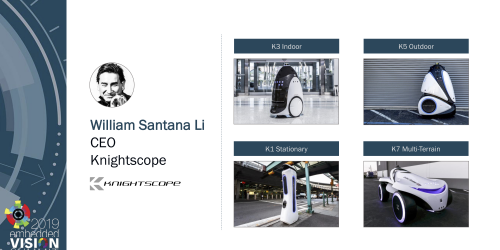“Teaching Machines to See, Understand, Describe and Predict Sports Games in Real Time,” a Presentation from Sportlogiq
Mehrsan Javan, CTO of Sportlogiq, presents the “Teaching Machines to See, Understand, Describe and Predict Sports Games in Real Time” tutorial at the May 2019 Embedded Vision Summit. Sports analytics is about observing, understanding and describing the game in an intelligent manner. In practice, this means designing a fully-automated, robust, end-to-end pipeline; from visual input, […]



